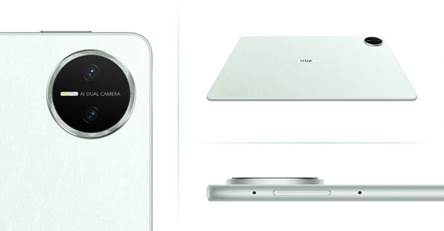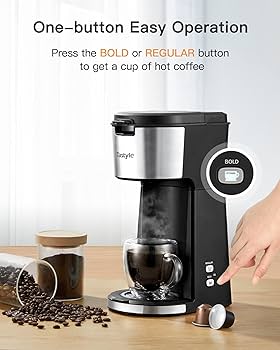Tablet vs. Laptop: Which Suits Your Needs in 2025?
Choosing the right device can significantly
influence how you work, learn, and play in 2025. The lines between tablets and
laptops continue to blur, as each offers unique strengths and capabilities.
Tablets are evolving with new features, while laptops remain reliable for
demanding tasks. This guide helps you navigate the essential differences, uses,
and values between these two devices, so you can make an informed decision.
Whether you prioritize mobility, performance, or price, understanding these factors
ensures that you select the right tool to enhance your daily experiences and
overall productivity.

Key
Differences Between Tablets and Laptops in 2025
Design and
Portability
Tablets
are incredibly portable with lightweight designs, often thinner and easier to
carry than laptops. They excel in flexibility, with detachable keyboards and
intuitive touchscreens. Laptops, while slightly bulkier, offer larger screens
and more ergonomic keyboards. For individuals always on the move, tablets pose
less burden, fitting snugly in compact bags. In contrast, those needing robust
input features might favor a laptop’s more substantial structure.
Performance
and Productivity
While
tablets have advanced remarkably, offering powerful processors for
multitasking, laptops remain superior in handling demanding software. Laptops
provide better thermal control, allowing for extended high-performance use.
Creative professionals and gamers will find that laptops run resource-heavy applications and graphics
more effectively. Tablets, however, offer impressive app versatility suitable
for more straightforward tasks, appealing to users who prioritize simplicity
over raw power.
Battery Life
and Charging
Tablets
typically boast longer battery life compared to laptops, designed to optimize
standby capabilities and energy-efficient processors. This makes tablets ideal
for prolonged on-the-go use without frequent charging. Laptops, however, have
improved their battery preservation with fast-charging features but often still
require daily charging under intensive use. If longevity away from power
sources is crucial, tablets hold a clear advantage in preserving operational
time.
Use Case
Scenarios: Which Device Excels?
For Students
and Educators
Tablets
offer students unrivaled convenience with digital note-taking apps and
educational tools. Lightweight and easy to handle, they support interactive
learning. However, laptops provide a richer suite for assignments that require
more extensive typing and software applications. Students engaged in design
projects or coding might benefit more from a laptop’s capabilities, ensuring
their academic resources are accessible and efficient.
For Creative
Professionals
Creative
experts using graphic design, video editing, and animation software will often
prefer laptops for their superior processing power and screen size. Precision
in tasks like photo editing is enhanced with laptops’ ability to connect
peripherals. Tablets improving with styluses
and design apps, may meet the needs of those creating intensive digital
artwork. Hence, selecting based on creative demands remains pivotal.
For Business
and Productivity
Business
professionals benefit from laptops that handle complex
spreadsheets and databases efficiently. Their robust connectivity options
ensure smooth operation during presentations or conferences. Tablets, with
their user-friendly interface, cater well to quick data access and note-taking
during meetings. When traveling frequently, a tablet provides an agile working
platform, but a laptop could better support long-term projects with detailed
work requirements.
For Casual Use
and Entertainment
For
those leaning towards casual browsing, social media, and streaming, tablets win
with their convenience and ease of access. They offer vibrant displays and
intuitive navigation, perfect for on-the-go entertainment. While laptops also
provide a rich multimedia experience with larger screens, their size makes
tablets the popular choice for personal leisure that requires immediate
portability and interaction.

Cost
Considerations and Value for Money
Tablets generally come with a lower initial cost
compared to laptops, making them attractive for budget-conscious buyers who
prioritize mobility and ease of use. However, laptops offer more significant
value with their functionality in professional and academic settings, often
providing superior performance in processing power, multitasking, and software
compatibility. Assessing long-term use scenarios and necessary features
justifies the cost, especially for users who need a device capable of handling complex
tasks. If specific applications or higher physical output are non-negotiable,
investing in a laptop may yield greater long-term satisfaction in productivity
and performance.
Hybrid
Devices: The Best of Both Worlds?
Hybrid devices, combining tablet flexibility with laptop
performance, have grown in popularity, offering the best of both worlds. They
offer detachable keyboards, touchscreen capabilities, and versatile usage,
catering to both casual and professional needs. Hybrids suit individuals
seeking a single device approach that doesn’t compromise portability or
performance. However, hybrids often come at a premium price point. Evaluating
whether their dual features align with personal needs and work habits helps
determine if they offer a balanced compromise over dedicated devices like
laptops or tablets.
Conclusion
Deciding between a tablet and a laptop in 2025 depends on personal requirements in performance, portability, and cost. Tablets like the Huawei matepad pro 12.2 tablet excel in portability, lightweight design, and impressive battery life, making them ideal for users prioritizing simplicity and mobility for everyday use. Laptops, with superior processing power, larger screens, and multitasking capabilities, satisfy intensive productivity needs such as business operations, academic work, and creative projects. Expertise area, budget, and work habits serve as guiding factors in making this decision. Whether you opt for mobility or capability, aligning device features with your lifestyle ensures a fitting choice tailored to your needs.


